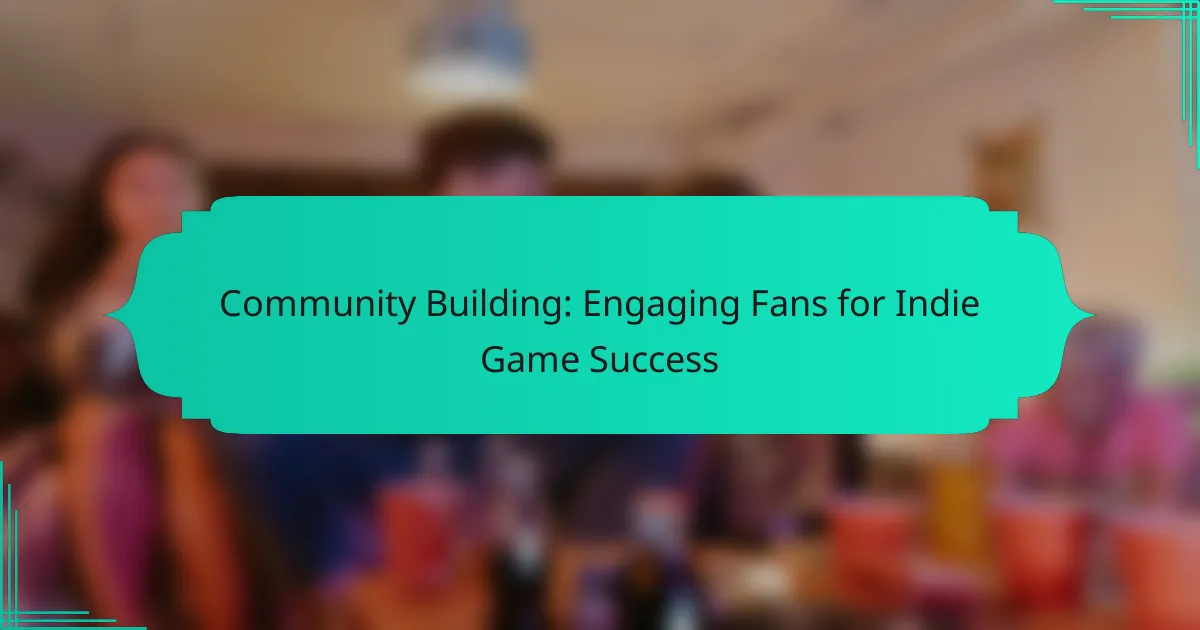Building a strong community is essential for indie game success, as it fosters player loyalty and engagement. Effective strategies include open communication, social media utilization, and interactive content. Understanding your audience’s preferences enhances community-building efforts. Metrics such as active participation and feedback frequency help gauge engagement levels.
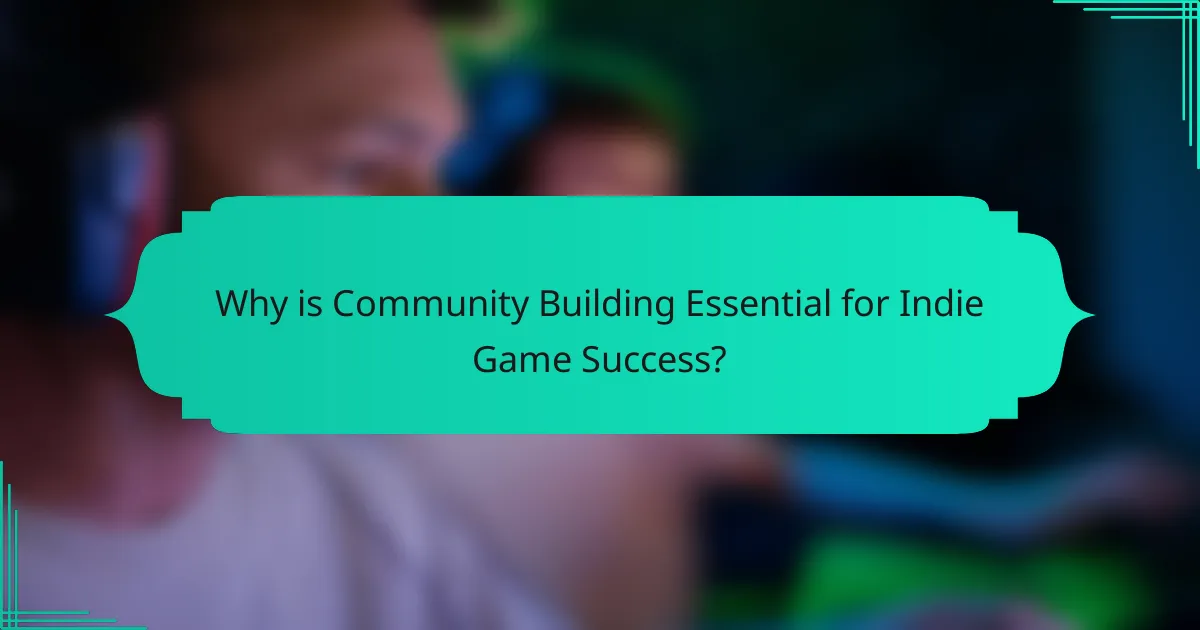
Why is Community Building Essential for Indie Game Success?
Community building is crucial for indie game success because it fosters player loyalty and engagement. A strong community encourages feedback, enhances visibility, and promotes word-of-mouth marketing. Engaged fans often become advocates, sharing their experiences and attracting new players. By creating a supportive environment, developers can cultivate lasting relationships that contribute to a game’s longevity. Community interactions can also provide valuable insights, helping developers refine gameplay and features to meet player expectations.
What are the Key Benefits of Engaging Fans?
Engaging fans offers key benefits that drive indie game success. It fosters loyalty, enhances community interaction, and generates valuable feedback for improvement.
Building a strong community around a game creates a sense of belonging. Fans feel invested, leading to increased word-of-mouth promotion. This organic marketing is crucial for indie developers with limited budgets.
Engagement activities, such as live streams and social media interactions, provide insights into player preferences. This feedback loop helps developers refine gameplay and address concerns promptly.
Moreover, a dedicated fanbase can contribute to crowdfunding efforts. When fans feel connected, they are more likely to support projects financially, ensuring sustainability and growth for indie games.
How Does Community Building Impact Game Longevity?
Community building significantly enhances game longevity by fostering player engagement and loyalty. A strong community encourages players to invest time and resources, creating a vibrant ecosystem around the game. This engagement leads to sustained interest, regular updates, and a sense of belonging among players. As a result, indie games often thrive through word-of-mouth promotion and community-driven content. The unique attribute of community feedback can also guide developers in refining gameplay, ensuring that the game evolves in line with player expectations.

Which Strategies Foster Effective Community Engagement?
Effective community engagement strategies include fostering open communication, utilizing social media platforms, and hosting events. These approaches build relationships and enhance loyalty among fans. Engaging fans through regular updates and interactive content can significantly increase their involvement. Collaborative projects, such as fan art contests, also encourage participation and creativity, strengthening community bonds.
How Can Social Media Platforms Enhance Fan Interaction?
Social media platforms enhance fan interaction by fostering community engagement and providing direct communication channels. These platforms allow indie game developers to connect with fans, share updates, and gather feedback in real time. Engaging content, such as polls and live streams, encourages participation and builds a loyal community. Collaborations with influencers can amplify reach and create buzz around game releases. Additionally, user-generated content showcases fan creativity, further strengthening community ties.
What Role Do Discord and Forums Play in Community Dynamics?
Discord and forums are crucial for fostering community dynamics in indie game development. They provide platforms for direct engagement, allowing fans to share feedback, discuss gameplay, and build relationships. This interaction enhances player loyalty and encourages a sense of belonging.
Discord’s real-time communication and community features enable developers to connect with fans instantly, facilitating quick responses and updates. Forums, on the other hand, serve as repositories for discussions, tutorials, and fan-generated content, enriching the community’s knowledge base. Together, they create an ecosystem that supports both developers and players, driving indie game success.
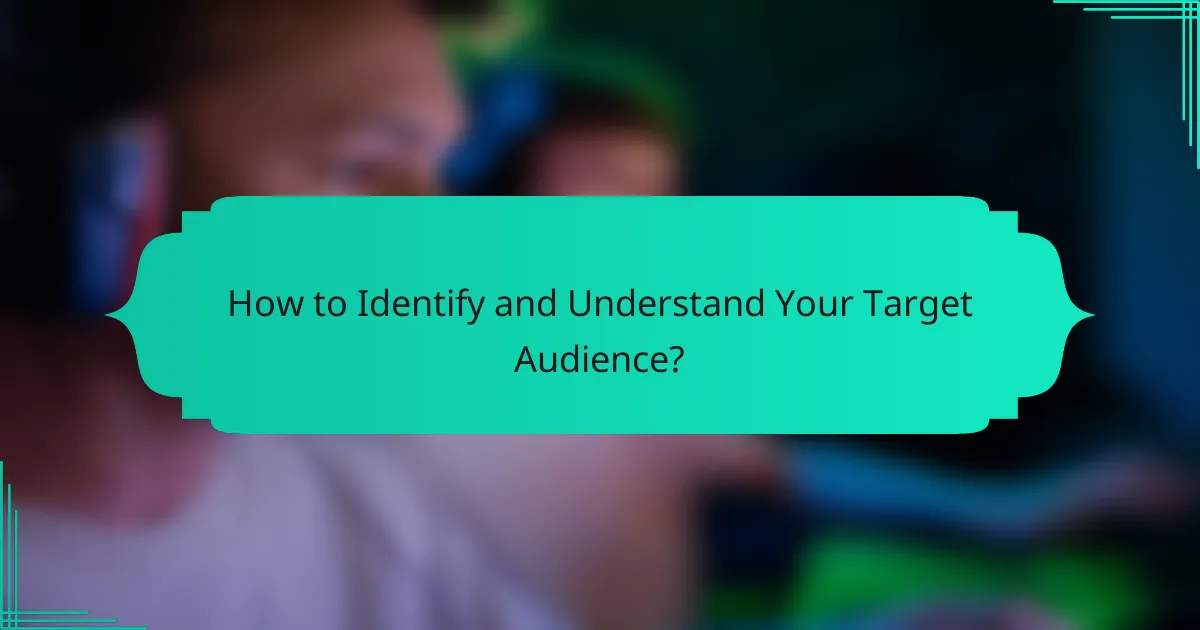
How to Identify and Understand Your Target Audience?
To identify and understand your target audience, focus on their interests, preferences, and behaviors. Start by analyzing demographics such as age, gender, and location, which can inform your community-building strategies.
Engage with your audience through surveys and social media interactions to gather insights. Observe discussions in relevant online forums to understand their needs and desires. Use this information to tailor your indie game content, ensuring it resonates with your fans.
Incorporate feedback loops to maintain ongoing engagement. This approach fosters a loyal community, which is essential for indie game success.
What Methods Help in Analyzing Player Demographics?
Analyzing player demographics involves using surveys, social media insights, and in-game analytics. These methods provide valuable data on player preferences and behaviors. Surveys can capture direct feedback, while social media analysis reveals community engagement. In-game analytics track player actions, offering insights into gameplay patterns. Combining these methods enhances understanding of the target audience, fostering effective community building for indie game success.
How Can Feedback Loops Improve Game Development?
Feedback loops enhance game development by fostering community engagement and improving game quality. They allow developers to gather player insights, refine gameplay, and build a loyal fan base. Engaging fans through surveys, forums, and social media creates a collaborative environment. This interaction not only helps identify bugs but also informs design choices, ensuring the game meets player expectations. As a result, successful indie games often emerge from strong community ties and responsive development practices.
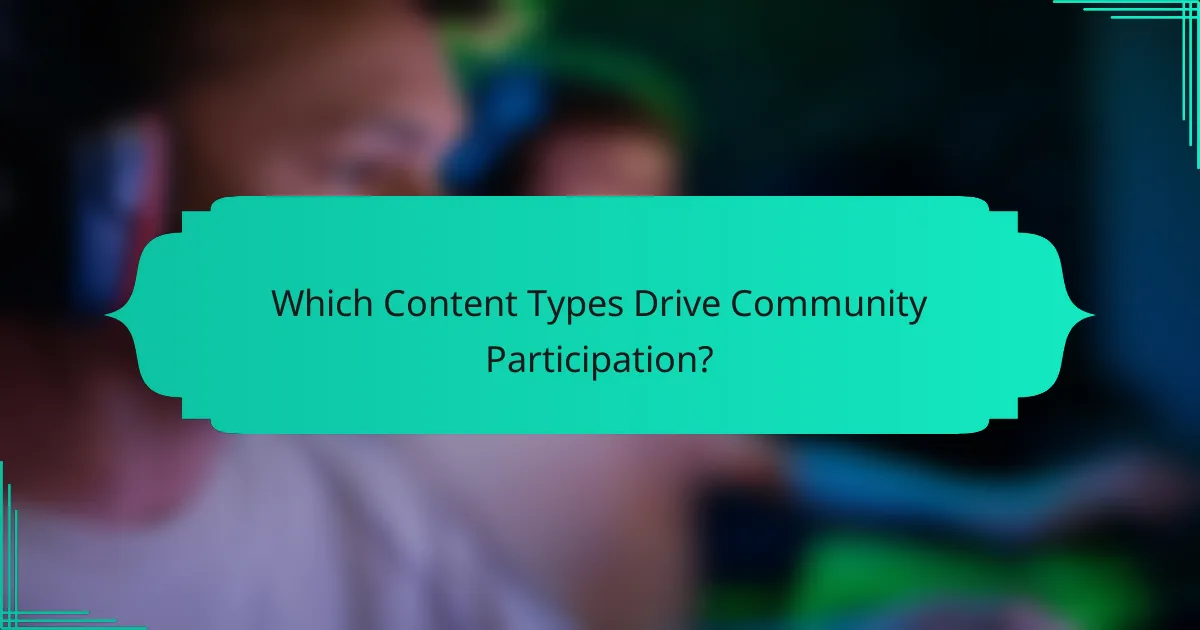
Which Content Types Drive Community Participation?
Engaging fans through interactive content types drives community participation. Popular formats include live streams, forums, and social media challenges that foster interaction.
Live streams create real-time engagement, allowing fans to ask questions and interact directly with developers. Forums facilitate discussions, enabling fans to share strategies or feedback. Social media challenges encourage creativity, allowing fans to showcase their skills and connect with others.
Utilizing these content types can significantly enhance community involvement, leading to a more vibrant and dedicated fan base.
How Do Updates and Newsletters Keep Fans Informed?
Updates and newsletters keep fans informed by providing timely information about game developments and community events. Regular communication fosters a sense of belonging and engagement among fans.
These updates can include game patches, new features, and upcoming events, which enhance player experience. Engaging storytelling within newsletters can deepen emotional connections to the game and its creators.
Moreover, feedback from fans can be integrated into updates, making players feel valued and heard. This two-way communication strengthens community ties, contributing to indie game success.
What Are the Best Practices for Hosting Community Events?
To host successful community events for indie games, prioritize engagement, inclusivity, and clear communication. Start by defining your event’s purpose and target audience.
1. Identify goals: Establish what you want to achieve, such as increasing player interaction or gathering feedback.
2. Choose the right format: Consider online or in-person events based on your audience’s preferences.
3. Promote effectively: Use social media, forums, and newsletters to reach potential attendees.
4. Foster interaction: Incorporate activities like Q&A sessions, live demos, or workshops to engage participants.
5. Gather feedback: Post-event surveys can provide insights for future improvements.
By focusing on these practices, you can create memorable experiences that strengthen your community and enhance your game’s success.
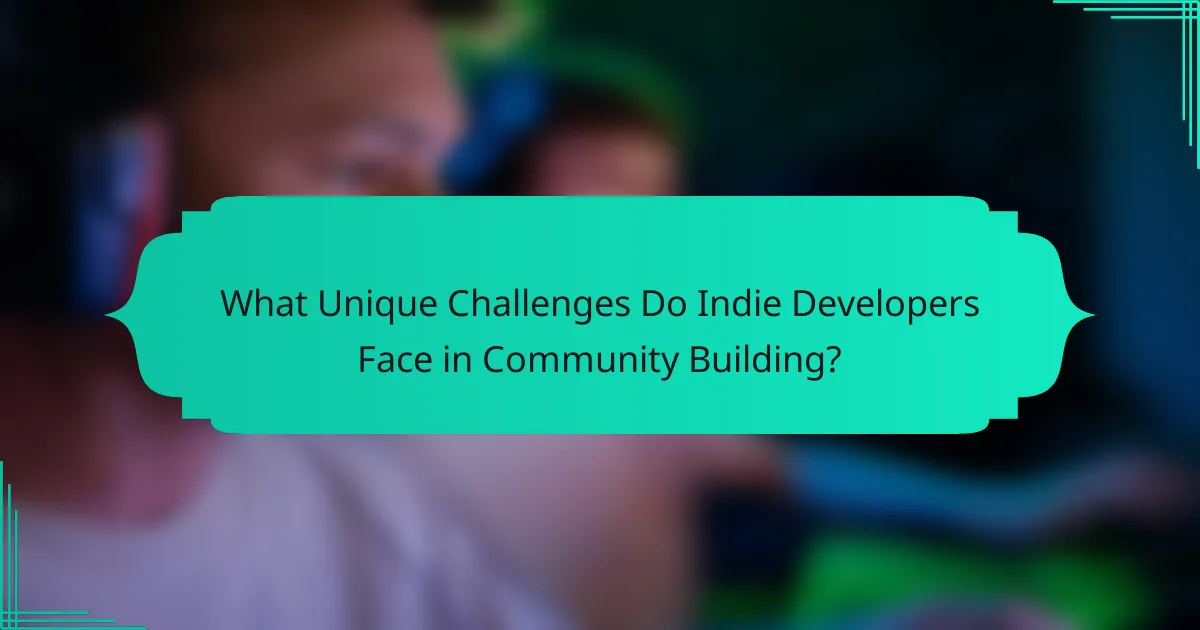
What Unique Challenges Do Indie Developers Face in Community Building?
Indie developers face unique challenges in community building due to limited resources, visibility, and engagement strategies. They often struggle to reach their target audience effectively, as larger studios dominate marketing channels. Building a loyal fan base requires consistent interaction and transparency, which can be difficult without dedicated marketing teams. Additionally, indie developers must navigate diverse platforms and communities, each with distinct cultures and expectations. These factors can hinder their ability to foster meaningful connections and sustain long-term community engagement.
How Can Limited Resources Be Effectively Managed?
Effectively managing limited resources in community building requires strategic engagement and prioritization. Focus on fostering strong relationships with fans through direct communication, feedback loops, and collaborative events. Leverage social media platforms to maximize outreach without significant financial investment. Utilize community-driven content, such as fan art or testimonials, to enhance visibility and engagement. Prioritize initiatives that yield the highest return on engagement, like contests or exclusive in-game rewards, to maintain enthusiasm and loyalty within the fanbase.
What Strategies Help Overcome Isolation in Development?
Building a community is essential for overcoming isolation in indie game development. Engaging fans fosters connection and collaboration, leading to shared experiences and support.
One effective strategy is to create online forums or social media groups. These platforms encourage fans to discuss ideas, share feedback, and build relationships. Regularly hosting events, such as game nights or Q&A sessions, enhances engagement and strengthens community bonds.
Another approach is to involve fans in the development process. Crowdsourcing ideas or beta testing invites players to contribute, making them feel valued and invested. This interaction can transform isolated developers into part of a vibrant community.
Finally, leveraging partnerships with other indie developers can expand outreach. Collaborative projects or cross-promotions introduce games to new audiences, creating a network of support and shared resources.
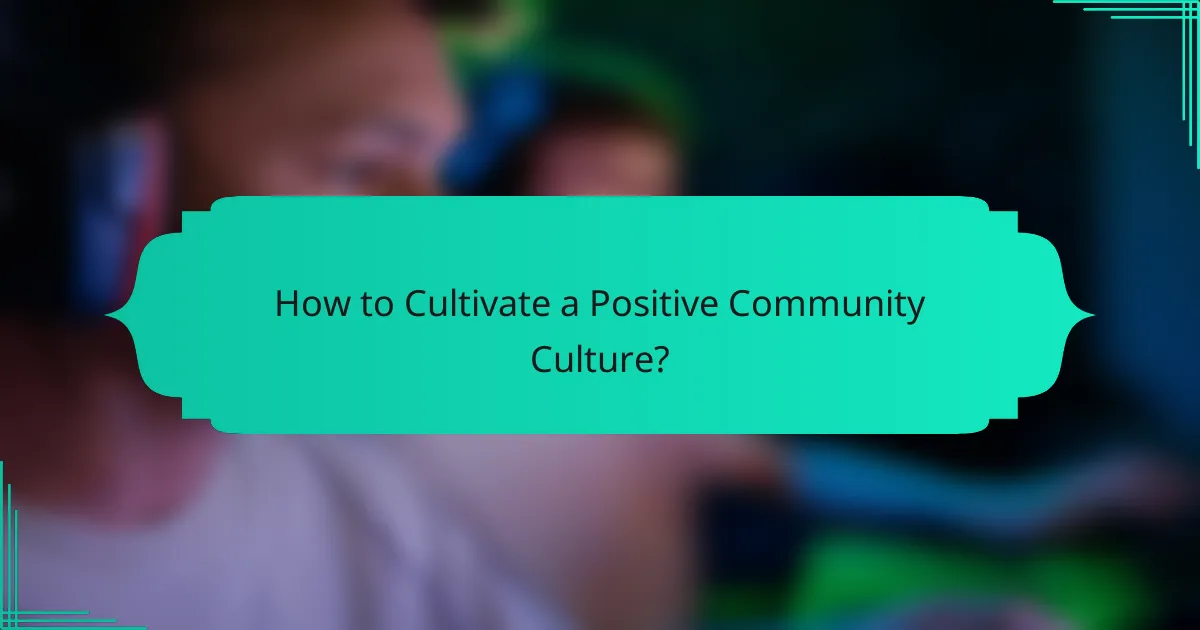
How to Cultivate a Positive Community Culture?
To cultivate a positive community culture, focus on fostering engagement and inclusivity. Encourage open communication to build trust among fans. Create opportunities for collaboration, such as events or forums, that allow fans to share their ideas and experiences. Recognize and celebrate contributions from community members, reinforcing their value. Establish clear guidelines to maintain a respectful environment, ensuring everyone feels welcome and valued.
What Guidelines Promote Respectful Interaction Among Members?
Guidelines that promote respectful interaction among members include clear communication, active listening, and constructive feedback. Establishing a code of conduct encourages positive behavior and fosters a supportive community. Encouraging inclusivity ensures diverse voices are heard, enhancing engagement. Regularly addressing conflicts promptly and fairly maintains a respectful atmosphere and builds trust among members.
How to Handle Conflict and Negative Feedback Constructively?
To handle conflict and negative feedback constructively, focus on open communication and active listening. Acknowledge the concerns raised, and respond with empathy.
Encourage a collaborative atmosphere by involving all parties in finding solutions. This approach fosters community trust and strengthens relationships among fans.
Utilize feedback as a tool for improvement, demonstrating commitment to enhancing the indie game experience. Regularly engage with your audience to build rapport and address issues proactively.
By maintaining a positive and constructive dialogue, you can turn conflict into an opportunity for growth and deeper community engagement.
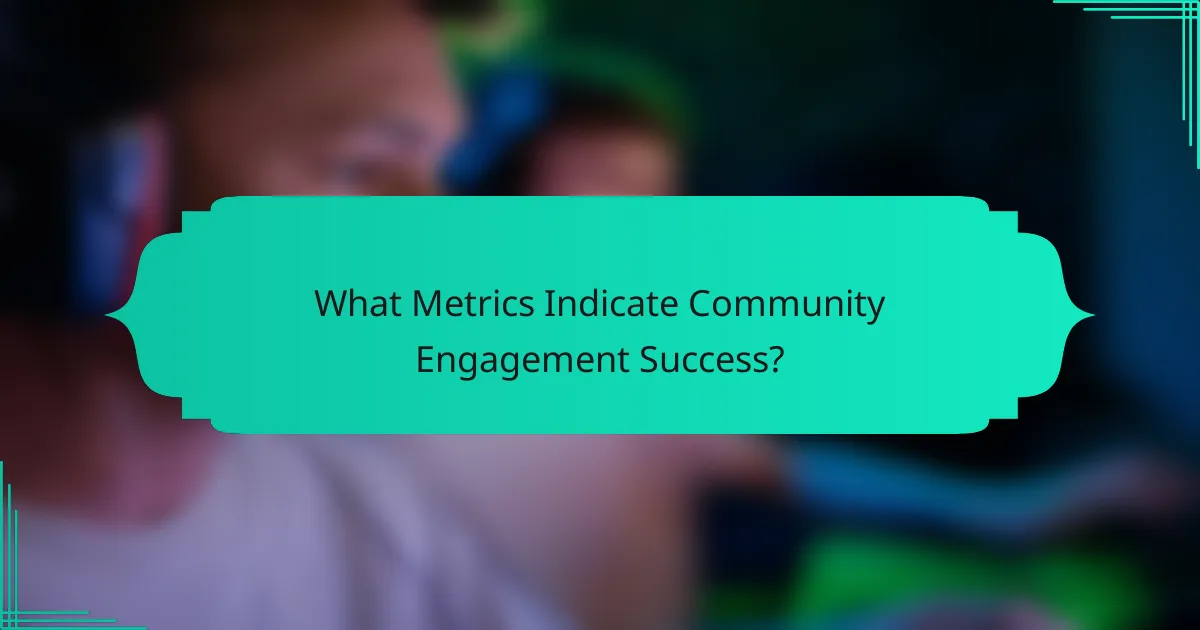
What Metrics Indicate Community Engagement Success?
Metrics indicating community engagement success include active participation, content sharing, feedback frequency, and community growth rates. These metrics reflect how well fans connect with the indie game and each other.
Active participation is measured by the number of users engaging in discussions, events, or gameplay sessions. Content sharing tracks how often community members share game-related content on social media or forums. Feedback frequency assesses the volume of comments, suggestions, and reviews provided by the community. Community growth rates evaluate the increase in members or followers over time, indicating expanding interest and engagement.
By analyzing these metrics, indie game developers can understand community dynamics and adapt strategies for better engagement.
How to Measure Fan Growth and Retention Rates?
To measure fan growth and retention rates, track key metrics over time. Focus on new fan acquisition, engagement levels, and returning players.
1. Analyze fan acquisition through social media followers and game downloads.
2. Monitor engagement by assessing active users and session length.
3. Evaluate retention rates by calculating the percentage of returning players after specific intervals.
4. Utilize surveys to gather feedback on fan satisfaction and community involvement.
These metrics provide insights into community building and long-term success for indie games.
What Tools Assist in Tracking Engagement Levels?
Tools that assist in tracking engagement levels include analytics software, social media monitoring tools, and community management platforms. These tools provide insights into fan interactions, content performance, and overall community sentiment.
Analytics software like Google Analytics tracks user behavior and engagement metrics. Social media monitoring tools, such as Hootsuite or Sprout Social, analyze interactions across platforms. Community management platforms, like Discord or Discourse, facilitate real-time engagement tracking and feedback collection.
Using these tools effectively enables indie game developers to adapt strategies, enhance fan engagement, and foster community growth.
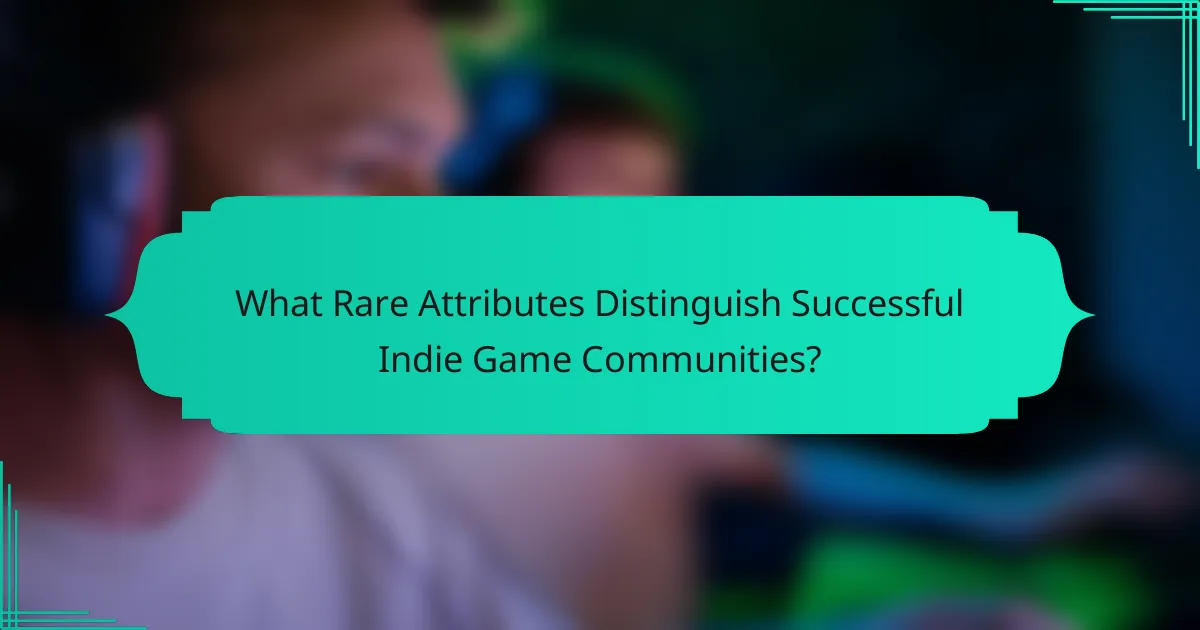
What Rare Attributes Distinguish Successful Indie Game Communities?
Successful indie game communities often exhibit rare attributes that enhance engagement and loyalty. These attributes include strong creator transparency, unique community-driven content, and a culture of inclusivity.
Creator transparency fosters trust and connection, allowing fans to feel invested in the game’s development. Unique community-driven content, such as fan art or mods, empowers players and strengthens their bond with the game. A culture of inclusivity ensures diverse voices are heard, promoting a welcoming environment that attracts a broader audience.
These rare attributes not only distinguish successful indie game communities but also contribute to their long-term sustainability and growth.
How Can Unique Fan Contributions Shape Game Development?
Unique fan contributions can significantly enhance game development by fostering community engagement. Fans provide valuable feedback, ideas, and support that can shape gameplay and narrative. This collaborative approach often leads to innovative features and a stronger connection between developers and players. For instance, incorporating fan-created content can enrich the game’s universe and expand its reach. Engaging fans not only builds loyalty but also creates a sense of ownership, making them more likely to advocate for the game. By valuing fan input, developers can create more immersive and successful indie games.
What Impact Do Special Events Have on Community Loyalty?
Special events significantly enhance community loyalty by fostering connections among fans. These events create shared experiences that strengthen emotional bonds and encourage ongoing engagement. They provide opportunities for players to interact directly with developers and each other, fostering a sense of belonging. As a result, loyal fans are more likely to advocate for the game and support future projects.
What Are the Best Practices for Sustaining Community Engagement Over Time?
To sustain community engagement over time, focus on consistent communication, value-driven interactions, and community feedback. Regular updates about game development keep fans informed and invested. Hosting events fosters connection, while actively seeking player input enhances loyalty. Building a sense of belonging encourages ongoing participation and support.
